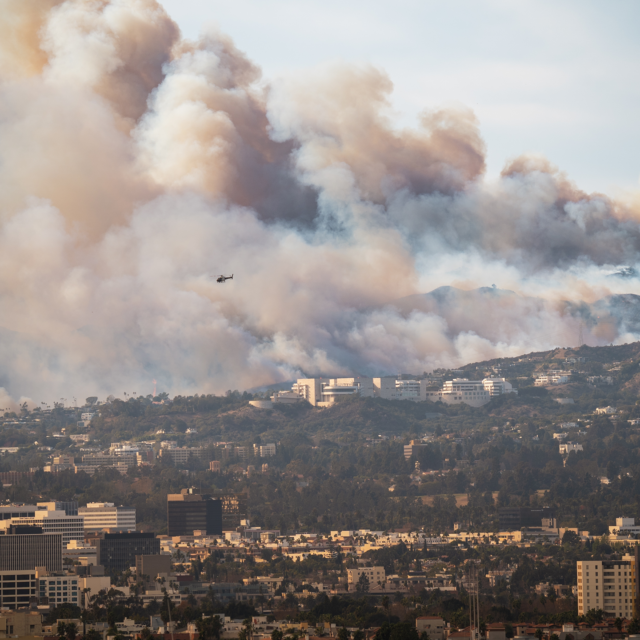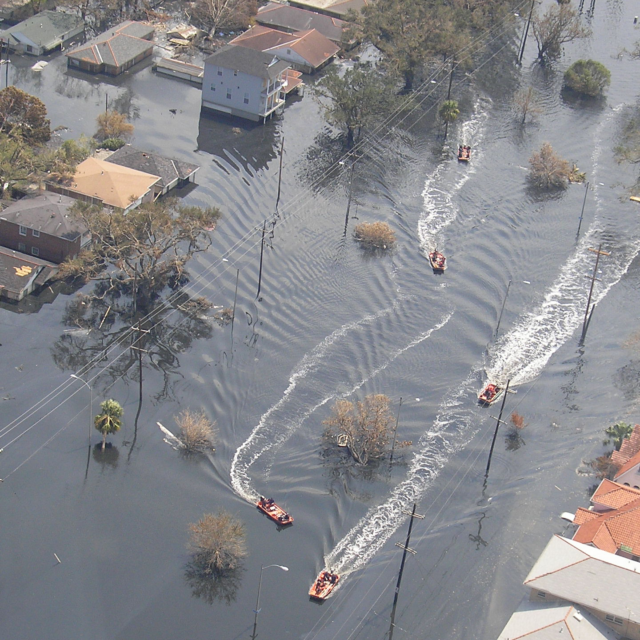Listen and subscribe to us on your favorite podcast platform:
“I don’t think we really understand the true public health impact, just for the reasons outlined, because—what is a heat-related death? And so, while we’ve seen an increase in reported heat-related illnesses and deaths, what about all those others that aren’t being reported?”
—Doug Melnick, Chief Sustainability Officer for the City of San Antonio
“It’s extremely important to hear what communities are saying, how they’re experiencing it, what solutions they’re presenting, so that we can prioritize the types of interventions that we bring to those communities. Because when the community acknowledges and recognizes that the city is listening… then I think it’s a win-win situation.”
—Marta Segura, Chief Heat Officer and Director of Climate Emergency Mobilization for the City of Los Angeles
Extreme heat poses the greatest risk of all climate hazards today. Heat is estimated by the National Weather Service to be two times deadlier than hurricanes and tornadoes combined.
New research published this week based on Centers for Disease Control and Prevention data shows a 117% increase in U.S. heat-related deaths over the last 24 years. Unprecedented heat conditions ground flights and rescue helicopters and compromise roads, bridges, and rail systems, while demand for cooling strains energy grids.
The change in temperature puts millions of people at heightened risk and exacerbates existing health vulnerability, especially given that cities are still lacking sufficient response systems, infrastructure and access to federal disaster aid.
These risks continue to be illuminated this summer, which is on track to be the second hottest since record-keeping began in the mid-1800s—surpassed only by last year’s temperatures. This July, parts of Los Angeles County experienced unprecedented daily highs and a record number of consecutive days over 110 degrees. San Antonio beat its highest previous heat index value, set last year, in early June of this year.
Rising heat has limited activity and endangered the health of residents of the South and Southwest, and has been moving northward into other regions of the U.S. As places throughout the U.S. struggle to plan for harmful temperatures, Ten Across cities are at the forefront in developing a framework and resources for effective responses.
Leaders like Marta Segura, chief heat officer and director of Climate Emergency Mobilization for the City of Los Angeles, and Doug Melnick, San Antonio’s chief sustainability officer, are among the nation’s first class of public officials dedicated to heat mitigation.
Listen in as Rae Ulrich, senior director for Ten Across and facilitator of the Ten Across Resilience Officers Network, talks with Marta, and Doug about the strategies their cities are testing and implementing to protect residents from heat, and how collaboration above and beyond city limits can improve resilience for all.
News clips included in the episode intro courtesy of:
Reuters
KTLA 5 News
KVIA ABC-7 News
Related links:
“Can chief heat officers protect US cities from extreme heat?” (Grist, August 6, 2024)
“Becerra says extreme heat emerging as a ‘public health crisis’” (The Hill, August 8, 2024)
Guest Speakers

Marta Segura is Chief Heat Officer and Director of Climate Emergency Mobilization for the City of Los Angeles. Marta is one of ten chief heat officers worldwide and is leading the development of Los Angeles’ Climate Vulnerability Assessment, Heat Action Plan, Local Hazard Mitigation Plan and City Climate Action Plan. She has extensive history as a policy thought leader in extreme heat, environmental justice, climate, public health and stakeholder engagement.

Douglas Melnick is the City of San Antonio’s first Chief Sustainability Officer and has held this office since 2014. Doug is responsible for overall leadership on the city’s Office of Sustainability and environmental policy. Prior to that, Doug was the Director of Planning and Director of the Mayor’s Office of Energy & Sustainability for the City of Albany, where he led the publication of innovative and comprehensive resilience plans such as Albany 2030 and the Albany Vulnerability Assessment and Climate Adaptation Plan.






